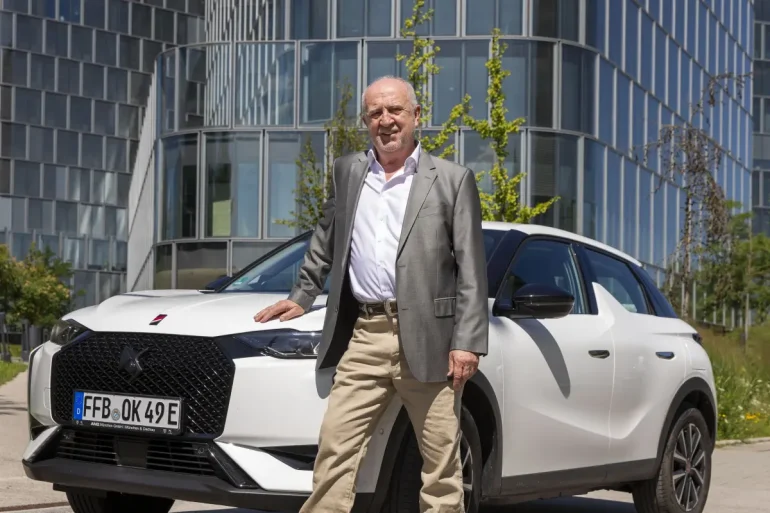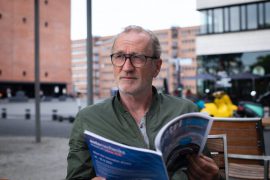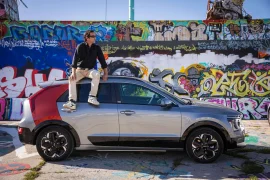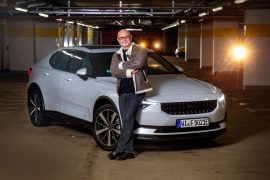We met up with one of Germany’s most important pioneers and driving forces behind the finest cuisine to talk to him about his exciting career, his commitment to quality and sustainability and his enthusiasm for his new, electric vehicle of French origin.
In the 1980s, a long overdue change took place in German gastronomy, towards more imaginative creations made from fresh, regional products. Leading media began to publish restaurant reviews; the names of top local chefs were publicized and the establishments in which they celebrated their art became places of longing for more and more gourmets, for whom food meant more than just eating.
Speaking of longing: The author of these lines still remembers his early visits to trade fairs when the top restaurant “Le Gourmet” was located diagonally opposite the former venue on Munich’s Theresienhöhe. And whenever his gaze wandered over there from the main entrance, he always resolved to visit this gourmet temple in the event of a particularly pleasant occasion and a well-filled wallet. Unfortunately, it was not to be, but the name of the owner and culinary artist Otto Koch was firmly anchored in his memory. Especially because of the outstanding role that the top chef played as an ambassador of good taste in the German quality revolution over the decades.
Counter-design: The other TV chef
Regardless of the fact that fewer and fewer people seem to be standing at the stove and taking the trouble or indulging in the pleasure of preparing dishes with fresh products themselves, there is an inflation of different cooking formats on public and, most recently, private TV channels. And as these are increasingly being garnished with show elements, it is not uncommon to find egomaniacal self-promoters with celebrity airs. After just a few moments of talking to Otto Koch, it becomes clear that he is the complete opposite of some “kitchen clowns”: unpretentious, relaxed and confident, always conveying his credo of striving for the highest quality.
The top chef received his first Michelin star back in 1976 and became known to a wider public in the 1990s through his participation in the 27-part cooking series “Zu Gast bei Christiane Herzog” with the wife of the then Federal President. From 1998 to 2021, an incredible 940 broadcasts of “ARD Buffet” followed. The focus was on craftsmanship, creativity, good ingredients and ultimately a tasty dish – and not on the chef. The aim was to get as many people as possible excited about good food, even beyond gourmet standards, and to encourage them to prepare fine dishes themselves.
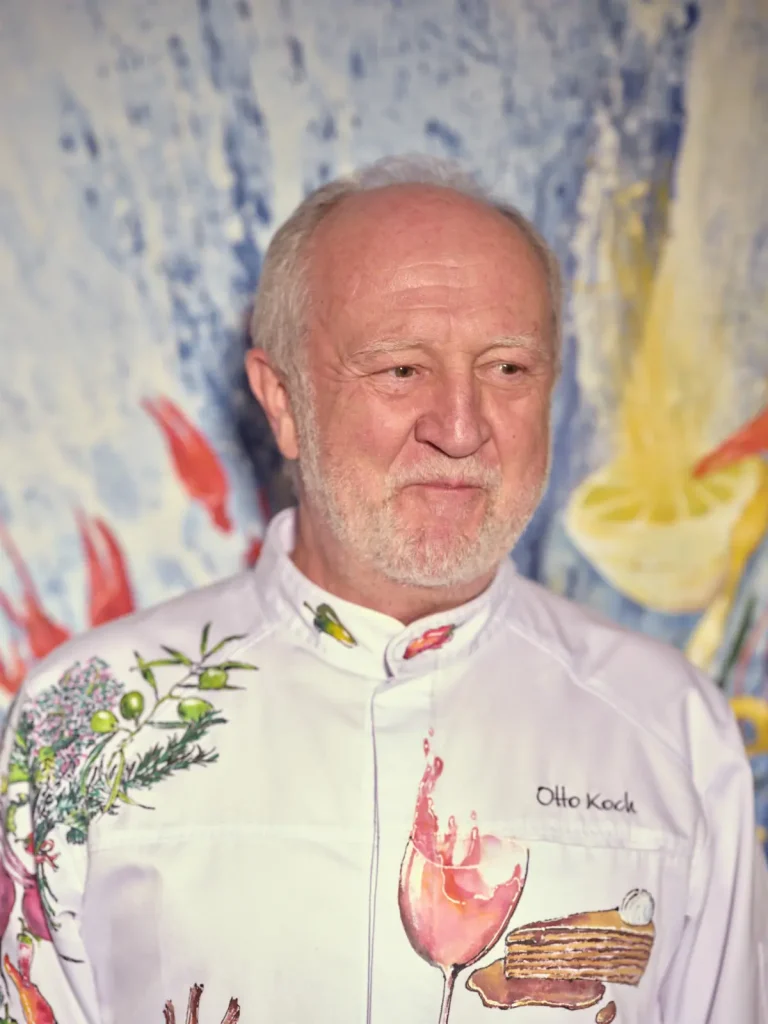
When researching the person of Otto Koch, we repeatedly find statements by his companions and later successful and well-known students with the same tenor. They always describe him as a trustworthy boss with a liberal management style that was unusual, especially at the time. When asked about the sometimes still gruff “casern tone” in top gastronomy today, Koch refers to his inspiration from the therapeutic “Hakomi method”, which is characterized by the claim of non-violence, which therefore includes the renunciation of suggestion, pressure and confrontation. The saying of the former chef and current catering consultant with a pedagogical impetus towards his employees fits in with this: “If someone is shouting here, it’s me – and I’m not shouting”.
From apprentice to quality ambassador
In his birthplace of Gröbenzell near Munich, Koch’s parents once ran a small grocer’s store that was highly regarded by customers for its excellent food. In order to maintain the level of quality, they traveled to the Munich wholesale market every day to stock up on fresh produce. The young Otto was therefore born with an appreciation of good and careful handling of food. However, the fact that he was later to devote himself to preparing them with dedication can be attributed to a special coincidence. The first chapter of his life plan originally included studying psychology in the USA. To finance this, he wanted to work part-time. As he did not want this to interfere with his studies, he considered a job that he could do later in the evening and at night. As this is almost only possible in the restaurant trade, he booked a short apprenticeship as a chef in preparation for his American adventure, during which not only he himself discovered his culinary passion, but his talent was also recognized and encouraged by his trainer and later mentor Siegfried Schaber from the Regina Palast Hotel in Munich. Inflamed by his chosen profession, he now had to avoid compulsory military service, which stood in the way of his ambitions, prompting him to further develop his skills and knowledge in Switzerland. In this environment, which has always been predestined for ambitious chefs, Otto Koch worked for five years at the Wallberg restaurant in Zurich and at the Carlton Hotel and Kulm Hotel in St. Moritz. He finally came into contact with Michelin-starred cuisine at the “à Point” restaurant in Basel and knew from then on that this was where he would find his professional home. The next logical step took him to France, where he was able to further develop and refine his creative style at the three-star restaurants L’Oasis near Cannes and “Taillevent” in Paris. A completely independent style, in which he was inspired by role models, but never copied their creations in the slightest.
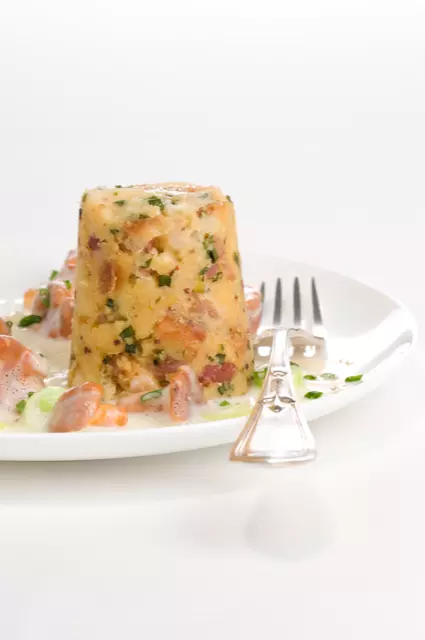
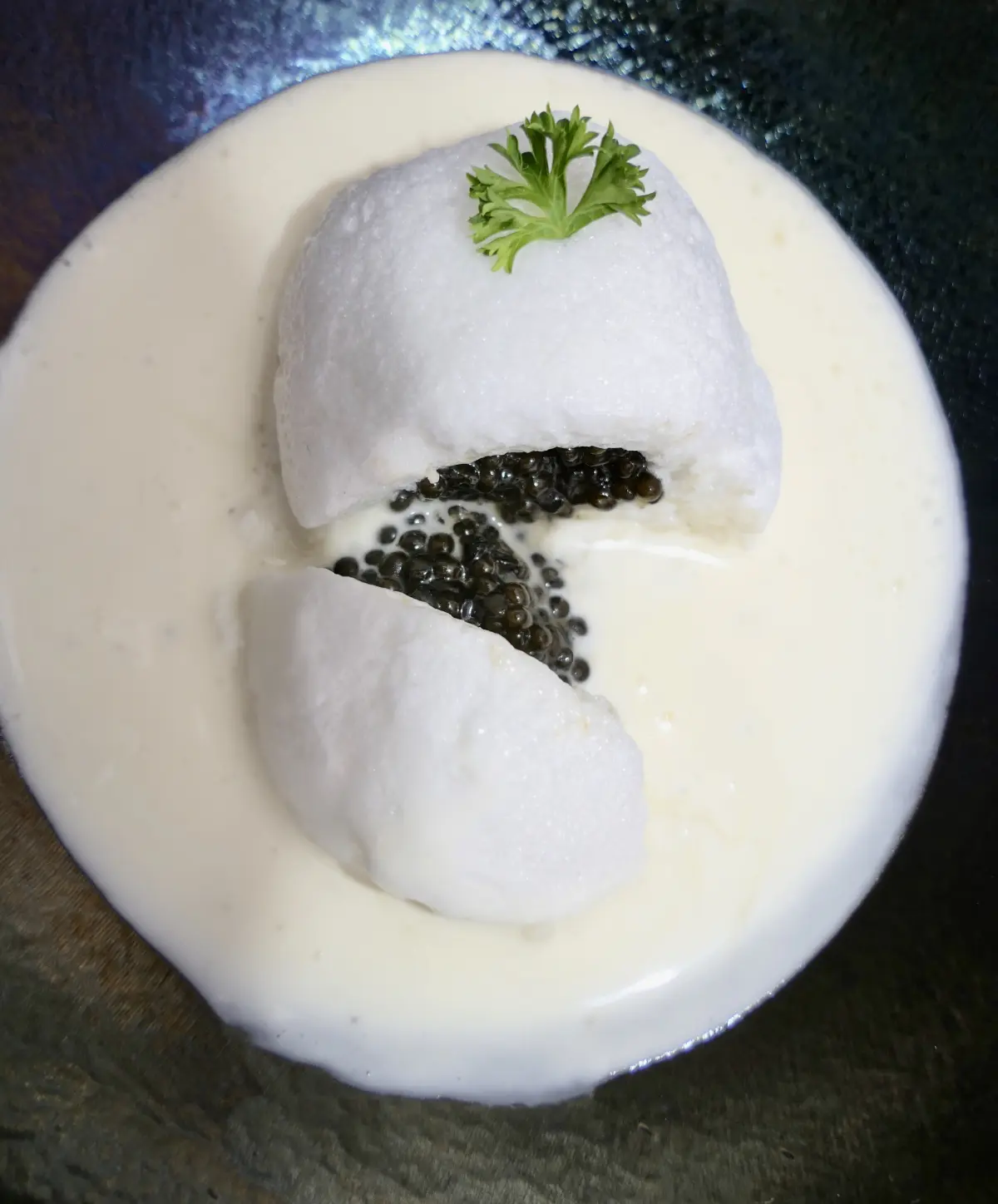

Back in Munich
Equipped with his wealth of experience, an original profile and a classification as a substitute reservist made possible thanks to legal tricks, Otto Koch was finally drawn back home. And although he was committed to top-class gastronomy, he initially opened a simple pub called “Mei Küch” (German for “My Kitchen”), which served unusual interpretations of Bavarian dishes. One day, when the iconic critic Wolfram Siebeck surprisingly indulged in his tripe for DM 6.90 and wrote a 1.5-page hymn to his taste experience, Otto Koch flipped the switch, refined the dish with champagne and morels and subsequently sold 1000 portions – at four times the price. In the same premises as before, but from then on under a name that reflected the standard of his cuisine: Le Gourmet.
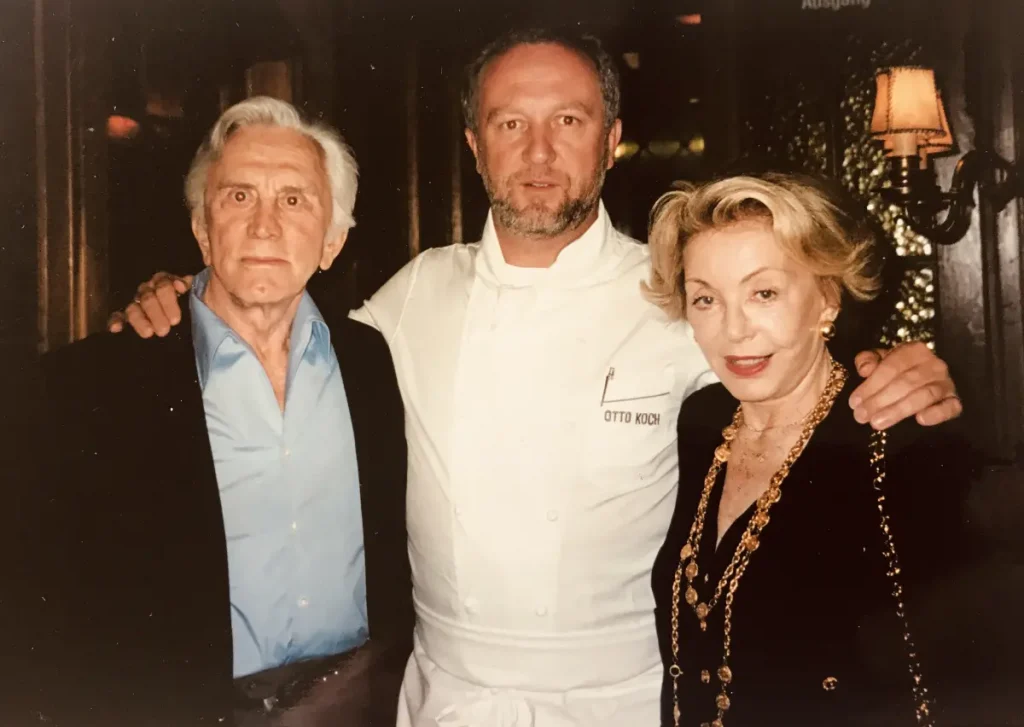
In 1989, the restaurant moved to the Haus Schwarzwälder with three restaurants in Munich’s city center. However, the new location brought with it a number of disadvantages, including a non-existent terrace, outdated building services and a lack of parking spaces nearby. The adverse conditions ultimately led to the closure of the business in 1995.
From October 2009 to the end of 2014, numerous Munich locals and foreign food lovers made a pilgrimage to one of the country’s most extraordinary culinary locations, which was located high up on Munich’s Olympic Tower in the form of a “revolving restaurant” with a 360° panoramic view. At the time, Otto Koch worked there as the patron of the star-awarded top cuisine in the “181 First”, named after the height of the tower in meters.
The pioneer
The closure of “le Gourmet” also marked the starting point of his career as a television chef. In addition, Otto Koch worked as a gourmet chef and culinary consultant at Robinson, celebrated his creations on cruise ships such as the MS Europa and the spectacular 5-masted sailing ship “Royal Clipper” and finally took over the kitchen of the gourmet restaurant “KochArt” in Zürs, Austria, each winter from 2002-2009. There he not only achieved his obligatory Michelin star, but also the first organic certification of a restaurant in the German-speaking world. Even during his time in Munich, his brother supplied him with vegetables, ducks, geese and pigs from free-range cultivation or species-appropriate pasture farming from his home in Gröbenzell. This means that Otto Koch is not only interested in the quality of the products, but also in how they are produced. But he is not only a pioneer and trailblazer of top gastronomy in Germany, but also a trailblazer when it comes to implementing an intelligent inventory management system in his business. Long before other restaurateurs even recognized the relevance of such a tool, the resourceful Bavarian tinkered with his own accounting program with the help of two, at that time sinfully expensive, Commodore computers, in order to obtain an overview of his purchase prices, other expenditure items and, last but not least, the optimum scope of his use of goods. In this way, he not only gained control over the various economic items, but also ensured that less and less food ended up in the waste garbage can.
The inspirer, teacher and mentor
Early on, Koch, together with Wolfram Siebeck and the top chefs Eckart Witzigmann, Dieter Biesler and Hans-Peter Wodarz, founded the interest group “New Chefs,” which issued the striking slogan of “unconditional quality” of light. unadulterated dishes with first-class fresh ingredients. The association, which was later dissolved, served primarily as a platform for a fruitful mutual exchange.
Then, in 1997, under the leadership of Otto Koch, a number of ambitious, up-and-coming chefs set up the “Junge Wilden” association with the aim of getting people excited about cooking and promoting the profession of chef. In addition, the association forms a promotion and networking forum for talented young chefs. Today, the former initiator is still one of the jurors of the award, which the association presents to dedicated chefs under 30 who are willing to break the rules with passion and fun for cooking. Consequently, the award does not focus on star cuisine, but rather on new ideas, creativity and the courage to create unconventional combinations.
As he used to do in Germany, Europe, Egypt, the Maldives, Bali, Japan or the USA, the busy non-retiree is still active today as a culinary consultant. He also organizes private “KochKurse” (cooking courses) and “KochAbende” (cooking evenings) for small groups of up to eight people in his newly designed “KochStudio” in Gröbenzell. His offer even includes online courses and seminars for gastronomic professionals under the name “École Culinaire”.
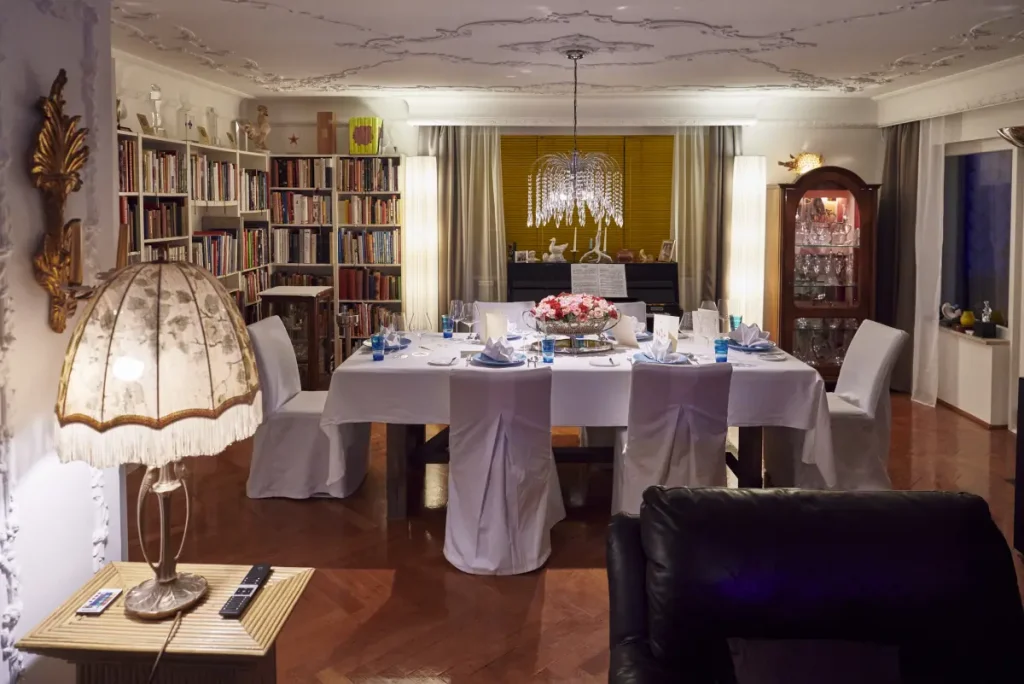
Electricity from conviction
To reduce his carbon footprint, the top chef had a photovoltaic system installed on the roof of his private home twenty years ago. And as you would expect from the meticulous Otto Koch, he recently calculated that he had saved 210 tons of CO2 during this time. Since the system often produces more electricity than is needed in the house during the summer months, it made sense to purchase a storage unit for the excess energy. In the end, the choice fell on a mobile storage unit – in the form of an electric car.
Otto Koch doesn’t like noise, he loves silence. So it’s no surprise that he particularly appreciates the silent gliding, the contemplative aspect of electric driving. And also the special feeling of being able to travel CO2-free with self-generated solar power.
Otto’s “Stromer
When asked why he chose the DS 3 E-TENSE model, the gourmet ambassador replies that he has always been a Francophile and consequently there was no alternative to a French brand for him. Moreover, a premium brand like DS Automobiles would be a perfect match for the sophisticated demands of a top chef… Seriously, it was above all the independent, modern design of the compact SUV and its suitability for everyday use that appealed to him. And his experience so far confirms that he has made the perfect choice for his requirements.
DS Automobiles recently overhauled its all-electric entry-level model and gave it a number of tweaks in the process. Following the facelift, in which chrome elements, for example, were reduced, it now has a cleaner, more streamlined appearance.
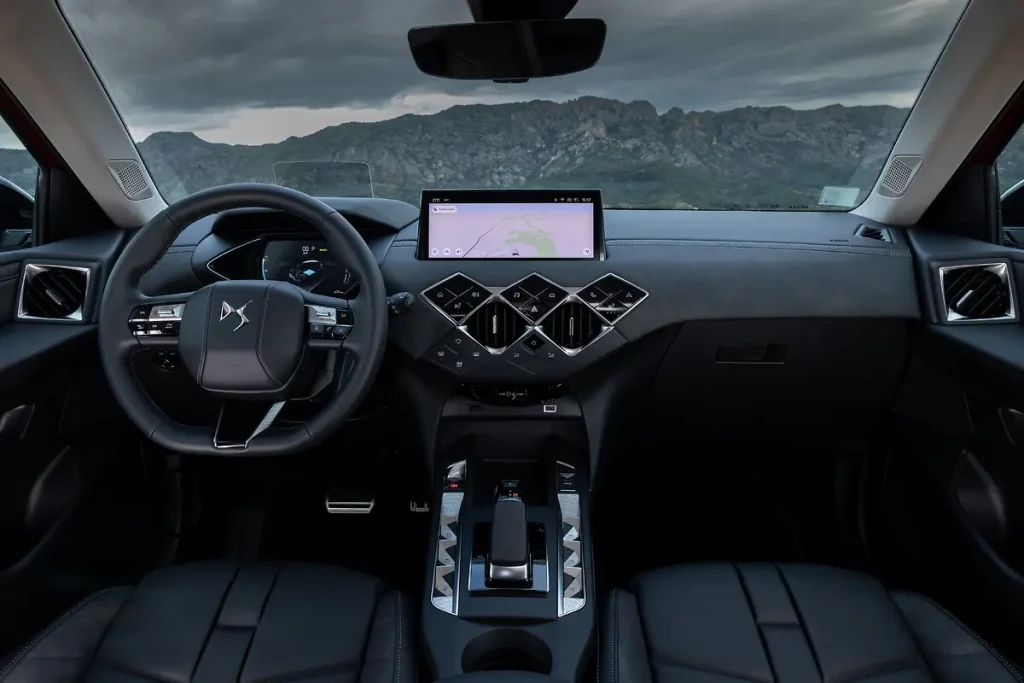
In addition, the comfortable noble Frenchman has been given a new drive with 156 hp. Thanks to more intelligent thermal management and a more densely packed 54 kWh battery, the average consumption is now between 14 and 16 kWh/100 km, according to the manufacturer. A value that, like the now communicated range of 374 to 434 kilometers, is quite respectable.
https://www.ottokoch.com
https://www.dsautomobiles.de/
Text: Peter Grett
Images:
Images 1-6: Otto Koch
Lead story and Images 7-10: Lutz Dürichen/Touremo
Image 11: DS Automobiles

